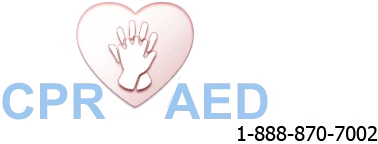CPR and first aid training are two topics that go hand-in-hand in learning basic skills for managing emergency situations. Aside from basic cardiopulmonary resuscitation skills, students are also taught the basic in giving first aid. Skills on treating bleeding, sprains, fractures, and shock are the major topics covered in first aid training. This program is based on the American Heart Association’s ECC or Emergency Cardiovascular Care program.
CPR and First Aid Training Content
Emergency Cardiovascular Care
The concept of ECC is focused on one end goal: saving lives through CPR and first aid. With adequate and efficient CPR and first aid, victims of cardiac arrest and various injuries have improved rates of survival and an even better quality of life. ECC’s mission is to reduce death and disability from emergencies that can be easily managed with the right skills.
The basic topics that are part of the curriculum are:
-
Adult and pediatric bag valve masks Chest compression and rescue breath skills
- Basic first aid
- Injury management
- CPR and AED for adults
- CPR and AED for infants
The basics of CPR and AED are taught using the Basic Life Support (BLS) framework from the American Heart Association. The concept of CPR is focused on quick recognition of a victim of heart attack followed by promptly by chest compressions and giving of rescue breaths. While AEDs are not commonly found in emergency situations, it is good that rescuers are prepared for whatever situation they face.
Automated external defibrillators (AEDs) are machines used by emergency medical services (EMS) – typically seen when an ambulance is called – and in health care settings such as hospitals. They are used when a heart goes into arrest (a heart attack). The machine is able to check the rhythm of the heart and supply needed shock to restore normal sinus rhythm. Signs of a cardiac arrest include sudden loss of consciousness, unresponsiveness to touch and sound, and abnormal or lack of breathing.
Raising Awareness through Education

Health education is the best way to raise public awareness on the dangers of cardiovascular diseases like coronary artery diseases. CAD is the leading cause of CV emergencies such as stroke and myocardial infarctions (heart attacks). Not only is the CPR and first aid program focused on skill building, but also on teaching trainees how to educate other people.
The importance of CPR and AED
Because cardiac arrest usually happens in places far from medical attention – the home, workplace, a public area – the survival rates of victims is very low. However, if a trained rescuer is in the area, performing chest compressions immediately can mean the difference between life and death.
Other course details
The program is primarily classroom based, with lessons and skills conducted spacious rooms outfitted with the latest training equipment – completed in approximately 4 hours. Simulated situations are practiced with training mannequins, first aid kits, and CPR equipment, and also in video lessons. More in-depth information is given in the student training manual.
Once a student passes the given skills and written exam, he or she is given a completion card or “certificate” that is valid for two years. The CPR program is targeted towards the general public, whether you’re a health care worker or not.

